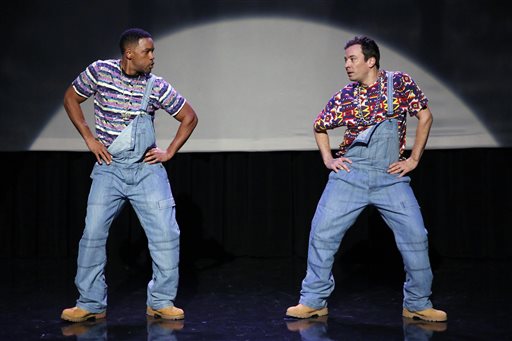A group of evolutionary biologists looked at the science of bump and grind, and they say they figured out exactly which dance movements catch a woman’s eye.
Researchers at Northumbria University and the University of Gottingen wanted to know what women look for in a dance partner, since “dancing ability, particularly that of men, may serve as a signal of mate quality.” But isolating specific dance moves is difficult – facial attractiveness, body shape and even perceived socioeconomic status play a role in how people judge the dancing ability of their peers.
So the researchers set up an experiment: They recruited 30 men to dance to a drumbeat for 30 seconds. The men were given no specific instructions on how to dance, and their movements were recorded via a sophisticated motion-capture system. Each dancer’s 30-second routine was then used to animate a “featureless, gender-neutral” computer-generated avatar. Researchers asked 37 women to view each of the dancing avatars and rate their performance on a seven-point scale.
But how to quantify what’s going on in each video? The researchers developed a taxonomy of individual dance moves. They isolated three key body regions and the main joints within – the central body, including the neck and torso; the legs, including the knees, hips and ankles; and the arms, including the shoulders, elbows and wrists. For each dancer, they measured the degree and type of movement at each joint – speed, size and variety of movements like bending, twisting and tilting.
They found that women rated dancers higher when they showed larger and more variable movements of the head, neck and torso. Speed of leg movements mattered too, particularly bending and twisting of the right knee. In what might be bad news for the 20 percent of the population who is left-footed, left-knee movement didn’t seem to matter. In fact, certain left-legged movements had a small negative correlation with dancing ability, meaning that dancers who favored left leg motion were rated more poorly. While not statistically significant, these findings suggest that there might be something to that old adage about “two left feet” after all.
One final surprise: Arm movement didn’t correlate with perceived dancing ability in any significant way.
Going beyond the dance floor, these findings may demonstrate that men’s dance moves could carry “honest signals of traits such as health, fitness, genetic quality and developmental history,” although the authors stress that more research is needed to be sure.
Are you a ‘good’ dancer or ‘bad’ dancer?
Copy the Story LinkSend questions/comments to the editors.



Success. Please wait for the page to reload. If the page does not reload within 5 seconds, please refresh the page.
Enter your email and password to access comments.
Hi, to comment on stories you must . This profile is in addition to your subscription and website login.
Already have a commenting profile? .
Invalid username/password.
Please check your email to confirm and complete your registration.
Only subscribers are eligible to post comments. Please subscribe or login first for digital access. Here’s why.
Use the form below to reset your password. When you've submitted your account email, we will send an email with a reset code.